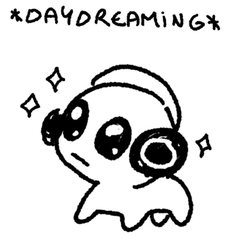Interior Concept Art with Perspective Rulers
Drawing interiors, and using perspective can be one of the most intimidating things to draw as an artist! I'm here to share some tips and tricks so that you can draw your very own background concept art. When you break everything down into basic steps, it's a lot simpler than you might think! It's even easier if you have a good reference image to work off of.
In this tutorial we'll be covering two techniques to help us draw background concept art; using a reference photo and using Clip Studio's perspective rulers.
Reference photos are so helpful, especially if you're just starting out drawing rooms and using perspective! They can help you get the general layout of the room, to work out proportions of the furniture in relation to the room, and to get ideas for interior decorations. You can use pictures of your own house as reference, or find quality stock photos online. For this tutorial I'll be using a picture of my living room!
What I've done here is, after importing this living room image, I lowered the opacity so that I could still see the image, then made a new layer to work off the photograph. A room is essentially a big box, and while many rooms have different shapes, your average room (and the easiest to draw) is a square or rectangular shaped one.
To start, we're going to trace the lines of the walls. For the lines of the floor and ceiling (pictured in blue), let the lines continue past the corners of the wall until they all intersect in the middle. That's your vanishing point. More on that in a minute.
You can see below some examples on how different rooms might look, using the same technique.
Now it's time to use the perspective ruler!
Using the perspective ruler tool - making sure 'add vanishing point' is selected - trace over all the diagonal intersecting lines (pictured in blue) and you'll have something like this image below:
This will be the basis for your room! The horizontal line (the one with red arrows pointing at it) that extends out of the vanishing point is our eye-level. Anything that falls below this line we'll be looking down at and anything that is above this line we'll look up at.
At this point you can start sketching in what you'd like the room to look like. You can use your reference photo as a general guide, but have fun changing and rearranging the furniture and windows/doors around to make the room unique.
Using my reference photo as a loose guide, I have changed several things about the room. I've added in a window, re-positioned the TV, changed the coffee table's shape, added a table lamp and so on. This is a very loose, rough sketch to get an idea of what I'd like the final concept to look like.
We don't need the reference photo any more, so that layer can be deleted. Now we'll start using the perspective ruler and vanishing point!
Things that are closer appear larger to us, while things that are further away appear smaller. To achieve this effect in a drawing with consistency, we must use the vanishing point. We'll start with something simple; the carpet.
Using the straight line tool, start from the vanishing point and draw a line along both sides of the carpet. Then, draw the horizontal line of the carpet. Using the grid layer as well as the perspective ruler can help keep your lines straight and tidy.
Clearing away the rulers, grid and sketch, your room now has a carpet! Let's draw some more things.
Using the same technique of using the vanishing point, we can start to draw other bits and pieces in the room. The side table, television, couch and window. For round, soft bits of furniture like the couch, start by drawing it in its most simple, box-like form at first.
Things are starting to come together now!
Drawing X's inside flat surfaces is a great way to identify where the center of the object is - great for when you're drawing windows, doors and such.
For the couch or other rounded, soft things, it's just a case of drawing rounded lines over the existing base guidelines.
While drawing, don't forget about eye level! Think if things fall above or below the horizontal line of eye level and think if you should be looking up at them or down into them.
Finally: personal touches! Who does this room belong to? Do they like to read? Are they messy? Tidy? Do they love plants? have pets? Like to play video games? Each aspect of their personality will bring some dynamic to the room. An avid reader might have a bookshelf, or books piled all around the room. Someone with a lot of pets might have food and water bowls all around, pet toys and leashes everywhere. Think about this as you add the finishing touches to your concept.
And that's how you can use a reference photo and Clip Studio's perspective ruler to create dynamic background concept art! Once you've mastered this kind of art, you can search for interior references with more dynamic angles; what would a room look like from an ant's point of view, or to someone standing on a ladder?
Have fun drawing! :)
























Comment